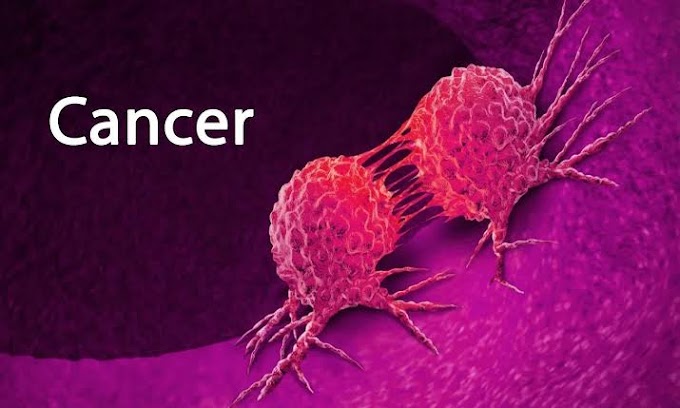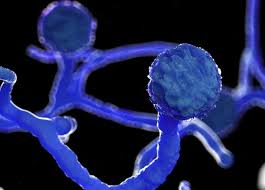Lymphatic Filariasis : An Overview
Lymphatic filariasis, usually known as elephantiasis, is a dismissed tropical infection. Contamination happens when filarial parasites are sent to people through mosquitoes. Disease is typically procured in youth making covered up harm the lymphatic framework.
The excruciating and significantly distorting noticeable appearances of the infection, lymphoedema, elephantiasis and scrotal expanding happen further down the road and can prompt lasting incapacity. These patients are actually handicapped, however experience mental, social and monetary misfortunes adding to shame and destitution.
In 2019, 859 million individuals in 50 nations were living in regions that require preventive chemotherapy to stop the spread of contamination.
The worldwide pattern gauge of individuals influenced by lymphatic filariasis was 25 million men with hydrocele and more than 15 million individuals with lymphoedema. Something like 36 million individuals stay with these persistent sickness appearances. Killing lymphatic filariasis can forestall pointless torment and add to the decrease of destitution.
Cause and transmission
Lymphatic filariasis is brought about by disease with parasites named nematodes (roundworms) of the family Filariodidea. There are 3 kinds of these string like filarial worms:
- Wuchereria bancrofti, which is liable for 90% of the cases
- Brugia malayi, which causes the vast majority of the rest of the cases
- Brugia timori, which additionally causes the sickness.
Grown-up worms home in the lymphatic vessels and disturb the ordinary capacity of the lymphatic framework. The worms can live for around 6–8 years and, during their lifetime, produce a great many microfilariae (youthful hatchlings) that flow in the blood.
Mosquitoes are contaminated with microfilariae by ingesting blood while gnawing a tainted host. Microfilariae develop into infective hatchlings inside the mosquito. At the point when tainted mosquitoes chomp individuals, develop parasite hatchlings are kept on the skin from where they can enter the body. The hatchlings then, at that point move to the lymphatic vessels where they form into grown-up worms, hence proceeding with a pattern of transmission.
Lymphatic filariasis is sent by various kinds of mosquitoes for instance by the Culex mosquito, inescapable across metropolitan and semi-metropolitan regions, Anopheles, basically found in rustic regions, and Aedes, essentially in endemic islands in the Pacific.
Side effects of Lymphatic filariasis
Lymphatic filariasis contamination includes asymptomatic, intense, and ongoing conditions. Most of diseases are asymptomatic, giving no outer indications of contamination while adding to transmission of the parasite. These asymptomatic diseases actually cause harm to the lymphatic framework and the kidneys and change the body's invulnerable framework.
At the point when lymphatic filariasis forms into persistent conditions it prompts lymphoedema (tissue expanding) or elephantiasis (skin/tissue thickening) of appendages and hydrocele (scrotal growing). Inclusion of bosoms and genital organs is normal. Such body deformations regularly lead to social disgrace and problematic emotional well-being, loss of pay acquiring openings and expanded clinical costs for patients and their overseers. The financial weights of disconnection and neediness are monstrous.
Intense scenes of nearby irritation including skin, lymph hubs and lymphatic vessels frequently go with ongoing lymphoedema or elephantiasis. A portion of these scenes are brought about by the body's invulnerable reaction to the parasite. Most are the aftereffect of optional bacterial skin disease where typical guards have been somewhat lost because of fundamental lymphatic harm. These intense assaults are weakening, may keep going for quite a long time and are the essential driver of lost wages among individuals enduring with lymphatic filariasis.
Strategies to deal with it !
World Health Assembly goal WHA50.29 urges Member States to dispense with lymphatic filariasis as a general medical issue. Accordingly, WHO dispatched its Global Program to Eliminate Lymphatic Filariasis (GPELF) in 2000.
What strategy's identity's depends on 2 key segments:
halting the spread of contamination through huge scope yearly treatment of all qualified individuals in a space or district where disease is available; and
lightening the experiencing brought about by lymphatic filariasis through arrangement of the suggested fundamental bundle of care.
In 2020, GPELF put out the accompanying objectives for the new NTD Road Map:
80% of endemic nations have met the models for approval of end of LF as a general medical issue, with both supported disease rates beneath target limits for no less than 4 years subsequent to halting MDA and giving the fundamental bundle of care in all spaces with known patients;
100% of endemic nations carry out post-MDA or post-approval observation; and decrease to 0 of the complete populace requiring MDA.
Huge scope treatment (preventive chemotherapy)
Disposal of lymphatic filariasis is conceivable by halting the spread of the contamination through preventive chemotherapy. The WHO suggested preventive chemotherapy procedure for lymphatic filariasis end is mass medication organization (MDA). MDA includes managing a yearly portion of medications to the whole in danger populace. The meds utilized limitedly affect grown-up parasites however viably lessen the thickness of microfilariae in the circulation system and forestall the spread of parasites to mosquitoes.
The MDA routine suggested relies upon the co-endemicity of lymphatic filariasis with other filarial illnesses. WHO suggests the accompanying MDA regimens:
- albendazole (400 mg) alone two times every year for regions co-endemic with loiasis
- ivermectin (200 mcg/kg) with albendazole (400 mg) in nations with onchocerciasis
- diethylcarbamazine citrate (DEC) (6 mg/kg) and albendazole (400 mg) in nations without onchocerciasis
Late proof demonstrates that the mix of every one of the three medications can securely clear practically all microfilariae from the blood of tainted individuals inside half a month, rather than years utilizing the normal two-medication blend.
WHO presently suggests the accompanying MDA routine in nations without onchocerciasis:
ivermectin (200 mcg/kg) along with diethylcarbamazine citrate (DEC) (6 mg/kg) and albendazole (400 mg) in specific settings
The effect of MDA relies upon the viability of the routine and the inclusion (extent of all out populace ingesting the medications). MDA with the two-medication regimens have intruded on the transmission cycle when directed every year for no less than 4–6 years with viable inclusion of the complete populace in danger. Salt braced with DEC has additionally been utilized in a couple of one of a kind settings to intrude on the transmission cycle.
Toward the beginning of GPELF, 81 nations were viewed as endemic for lymphatic filariasis. Further epidemiological information explored since, demonstrate that preventive chemotherapy was not needed in 10 nations. From 2000 to 2019, 8.2 billion medicines were conveyed to in excess of 923 million individuals basically once in 68 nations, extensively diminishing transmission in numerous spots. The populace requiring MDA has declined by 43% (648 million) where contamination pervasiveness has been diminished underneath end limits. The by and large financial advantage of the program during 2000-2007 is moderately assessed at US$ 24 billion. Medicines until 2015 are assessed to have deflected basically US$ 100.5 billion of monetary misfortune expected to have happened over the lifetime of associates who have profited with treatment.
Seventeen nations and domain (Cambodia, The Cook Islands, Egypt, Kiribati, Maldives, Malawi, Marshall Islands, Niue, Palau, Sri Lanka, Thailand, Togo, Tonga, Vanuatu, Viet Nam, Wallis and Futuna, and Yemen) are presently recognized as accomplishing end of lymphatic filariasis as a general medical condition. Five extra nations have effectively carried out suggested systems, halted huge scope treatment and are under observation to exhibit that disposal has been accomplished. Preventive chemotherapy is as yet needed in 50 nations and inside 10 of these nations MDA has not yet been conveyed to all endemic regions as of the finish of 2019.
Morbidity Management
Morbidity management and incapacity counteraction are crucial for working on general wellbeing and are fundamental administrations that ought to be given by the medical care framework to guarantee maintainability. Medical procedure can reduce most instances of hydrocele. Clinical seriousness and movement of the infection, including intense provocative scenes, can be decreased and forestalled with basic proportions of cleanliness, healthy skin, activities, and height of influenced appendages. Individuals with lymphoedema should approach proceeding with care for the duration of their lives, both to deal with the infection and to forestall movement to further developed stages.
The GPELF means to give admittance to a fundamental bundle of care for each individual with related constant appearances of lymphatic filariasis in all spaces where the infection is available, in this way mitigating enduring and advancing improvement in their personal satisfaction.
Accomplishment in 2030 will be accomplished if individuals influenced by lymphatic filariasis approach the accompanying fundamental bundle of care:
- Treatment for scenes of adenolymphangitis (ADL);
- Direction in applying straightforward measures to oversee lymphoedema to forestall movement of sickness and incapacitating, provocative scenes of ADL;
- Medical procedure for hydrocele;
- Treatment for disease
Vector control
Mosquito control is a supplemental procedure upheld by WHO. It is utilized to decrease transmission of lymphatic filariasis and other mosquito-borne contaminations. Contingent upon the parasite-vector species, measures, for example, insect poison treated nets, indoor remaining splashing or individual security measures may assist with shielding individuals from disease. The utilization of bug spray treated nets in regions where Anopheles is the essential vector for filariasis improves the effect on transmission during and after MDA.
Disclaimer: The data included on this site is for educative purposes only and is not planned to be sub for clinical treatment by skilled medical care. Because of individual needs, the reader should consult their physician to determine the appropriateness of the data for the reader's situation.






